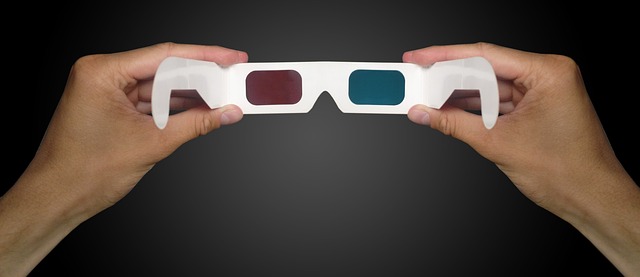Both IMAX and 3D technologies enhance the movie-watching experience in their own unique way. While IMAX offers a larger screen size and superior sound quality, 3D adds depth to the visuals that make them appear lifelike
What is IMAX?
(Photo by Parsoa Khorsand on Unsplash )

IMAX is a film format that was created in the late 1960s by Canadian filmmakers. Unlike traditional films, IMAX uses larger film frames and projectors to create a more immersive viewing experience. The screens used for IMAX are much bigger than those used in regular cinemas, often spanning several stories high.
One of the main draws of IMAX is its high image resolution. Because of the larger film frame size, movies shown in IMAX can be displayed with incredible detail and clarity. This makes it ideal for showcasing visually stunning films like nature documentaries or action-packed blockbusters.
Another unique feature of IMAX is its sound system. IMAX theaters have specialized speakers placed throughout the room that create a surround-sound effect, making you feel as though you’re right in the middle of all the action.
If you want to experience your favorite movies on a massive screen with unbeatable sound quality and picture resolution, then an IMAX theater may be just what you need!
What is 3d?
(Photo by Aditya Vyas on Unsplash )

3D technology has revolutionized the movie industry, making it more immersive and engaging than ever before. But what exactly is 3D? Simply put, it’s a technique of creating an illusion of depth in images or videos to create a three-dimensional effect.
To achieve this effect, filmmakers use either polarized or active shutter glasses that work with specialized projectors to display two separate images at different angles on the screen. These images are then combined by our brain, tricking us into perceiving them as one image with depth.
One key advantage of 3D movies is their ability to make viewers feel like they’re part of the action. With its realistic visuals and lifelike effects, 3D provides a more immersive experience compared to traditional 2D films.
However, some people may find 3D movies uncomfortable or even nauseating due to eye strain caused by constant focusing on objects at different depths. It’s important for individuals with underlying medical conditions such as epilepsy or vision problems to consult their doctors before watching any 3D content.
While not perfect for everyone, there’s no denying that when done right, 3D can provide an unforgettable cinematic experience that transports audiences into another world altogether.
IMAX Vs. 3D – Key differences
IMAX and 3D are two different technologies that enhance the movie-watching experience. The key difference between IMAX and 3D lies in their modes of presentation. While IMAX provides a larger screen with crystal-clear image quality, 3D offers a three-dimensional viewing experience where objects appear to leap out of the screen.
In terms of visual effects, IMAX is superior as it provides an immersive cinematic experience with its massive curved screens, high-definition images and superb surround sound technology. On the other hand, 3D enhances the depth perception by adding another dimension to what we see on-screen.
Another significant distinction is that while most movies can be converted into 3D format during post-production, only certain films are shot using special cameras for screening in IMAX theaters.
Furthermore, wearing glasses is mandatory for watching a movie in 3D as it requires specialized eyewear to create an illusion of depth perception. In contrast, watching an IMAX movie does not require any additional accessories.
Both technologies offer unique experiences that make them appealing to different types of audiences; while some might prefer the grandeur and spectacle provided by IMAX theaters others may enjoy getting lost in vibrant worlds brought to life through exceptional three-dimensional visuals offered by 3D technology.
The advantages and disadvantages of IMAX
IMAX is a technology that offers an immersive movie-watching experience. Watching a film in IMAX can be an incredible experience, but it also comes with some advantages and disadvantages.
One of the significant advantages of IMAX is its screen size. It offers up to 10 times more screen space than a standard cinema, making it easier for viewers to see every detail on the screen clearly. Also, the sound quality in IMAX theaters is exceptional as they are equipped with state-of-the-art audio systems that provide clear and crisp sounds.
Another advantage of IMAX is its ability to show movies shot on large-format cameras like 70mm or digital ones. This technology allows directors to capture stunning visuals and offer viewers a glimpse into their creative vision.
However, there are also some drawbacks associated with watching movies in IMAX. One of them being that tickets prices tend to be much higher than regular cinemas due to the advanced technology used during filming and projection.
Additionally, not all movies are suitable for this format because only specific genres such as action films or documentaries benefit from the larger-than-life approach offered by an IMAX theater.
While there are many benefits to watching films in an IMAX theater – including bigger screens and better sound quality – there are also drawbacks such as higher ticket prices and limited genre availability.
The advantages and disadvantages of 3D
3D technology has been around for quite some time now and has revolutionized the movie-going experience. But like any other technology, it comes with its advantages and disadvantages.
Advantages:
One of the most significant benefits of 3D is that it immerses you into a movie’s world by providing depth perception. It can make scenes much more realistic, making you feel like you’re part of the action. Additionally, watching movies in 3D can enhance your cognitive skills as it requires more focus and concentration to follow along.
Disadvantages:
On the downside, not everyone enjoys watching movies in 3D. Some people may find it uncomfortable or even nauseating due to headaches or eye strain caused by wearing glasses continuously throughout an entire film. Another disadvantage could be that certain films are poorly converted into 3D which results in a loss of image quality.
Moreover, some argue that at times, filmmakers use this technology gimmickily – merely adding dimensionality without actually enhancing how we experience their storylines.
While there are pros and cons to watching movies in 3D, ultimately whether or not one prefers to watch films this way boils down to personal preference.
Is 3D safe for eyes?
Many people enjoy watching movies in 3D because of the immersive experience it provides. However, there have been concerns about whether or not 3D is safe for our eyes.
According to ophthalmologists, prolonged exposure to 3D images can cause eye strain and fatigue. This is because our eyes are constantly adjusting to the changing focus points in a 3D movie. As a result, some people may experience headaches, dizziness, and nausea.
Moreover, children under six years old should not be exposed to 3D images as their visual system is still developing and they may find it difficult to process the information correctly.
On the other hand, if you watch a movie in 2D with good lighting and proper seating distance from the screen then that could reduce your risk of experiencing any negative effects on your vision.
While watching movies in 3D can be exciting for many viewers but it’s important to take breaks frequently during extended viewings and maintain safe viewing distances from screens.
Featured Image By – Mediamodifier from Pixabay








